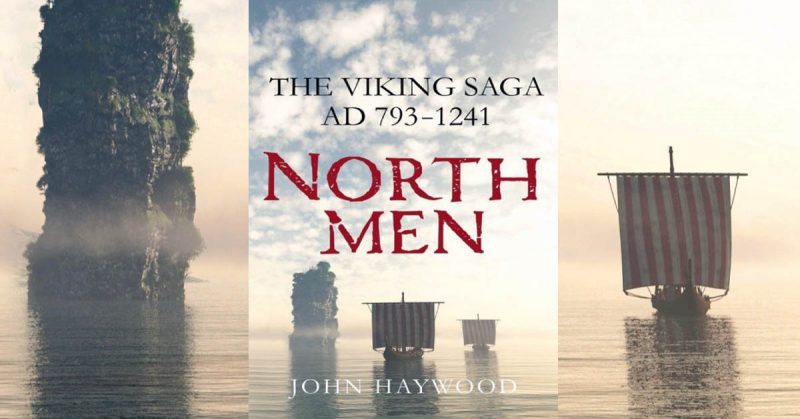“Northmen: The Viking Saga, AD 793-1241” By John Haywood
Reviewed By Guest Blogger David D. Kindy
For nearly 500 years, the Vikings were the scourge of much of Europe, the Mediterranean, the Middle East and beyond. These fearsome warriors invaded and conquered vast swaths of lands from Great Britain and France to Islamic Spain and Italy. Along the way, it colonized Iceland, Greenland and even Russia, and managed to set up outposts in what is now North America.
In “Northmen: The Viking Saga, AD 793-1241,” historian John Haywood recounts with compelling detail this expansive and violent journey by Scandinavian hordes across five centuries. Published by Thomas Dunne Books, this authoritative work provides historic background for the legendary Ragnar Lodbrok (literally “hairy breeches”), made even more famous by The History Channel’s wildly popular show “Vikings,” and the countless Norse leaders who followed in his path with their own longboats.
Haywood is an expert on Dark Age Europe and he carefully recounts the waves of raiding parties and invading armies that swept across the continent and beyond in their thirstless quest for treasure, glory and fame. A chilling aura and impressive warrior culture drove this reign of terror that saw the Vikings conquer and rule much of Great Britain and establish Normandy (translated as “men of the North”) as a protectorate for Francia.
Rollo, the great Viking chieftain, and his followers signed a peace treaty and settled the coastal area of northern France. Their job was to defend Paris from other invading Viking tribes. More than a century later, Rollo’s great-great-great grandson William the Conqueror would lead the Norman invasion of England and become its king.
Haywood describes the Viking saga with meticulous detail. His book is well written and thoroughly researched with interesting facts about the Scandinavian rampage. At times, it can come across like Genesis from the Bible with so much who-begat-who. But, in the end, it is a rich tapestry of amazing stories about one of history’s most enigmatic warrior cultures and its successes and failures.
What drove the Vikings to raid and pillage is an interesting story in itself. Haywood carefully documents how the lack of centralized and comprehensive governments across Scandinavia during the Dark Ages enabled the development of warlords and warrior clans that, at first, battled each other for control. Soon, though, they realized there were fortunes to be made elsewhere instead of bloodying each other. Without a king or established government to reign in this lust for plunder, the Viking tribes were free to roam as far as their longboats would take them.
That reach proved to be significant. When not attacking, Vikings also took on the roles of explorers and merchants. All three career paths would lead them thousands of miles from Scandinavia and leave a significant cultural and linguistic impact on many lands. Many parts of England, Scotland and Ireland still have local names that trace back to the Viking invasions while Russia owes its establishment to the Rus, Norse fur traders who plied their trade along the Volga and other rivers.
If nothing else, the Vikings were very adaptive. In addition to lending its own twist to local vocabulary, it easily adopted other customs and beliefs into its own culture. The vast hordes of Northmen would eventually surrender allegiance to Oden and Thor and accept Christ as their religious center. In Normandy, by the time William the Conquerer sailed across the English Channel, the fierce warriors transformed from Vikings to Frenchmen in just five generations.
This adaptability would lead to the end of the Vikings. By the 13th century, the warrior culture had passed and the Northmen began to settle down. Most of Scandinavia became Christian and began pursuing less violent career paths. Stronger national governments also began clamping down on warrior chieftains in an effort to develop less bellicose relationships with neighbors.
The Viking saga would become the stuff of legends. Oral tradition was strong in this culture and writing about history did not really catch on until the 12th century, so much of what we know today can be speculative. That’s why this work by John Haywood is so important. His research takes us beyond the myth and fable into the hearts and minds of the real Vikings so we can understand their impact through history. And it was quite an impact!
Author: David D. Kindy

